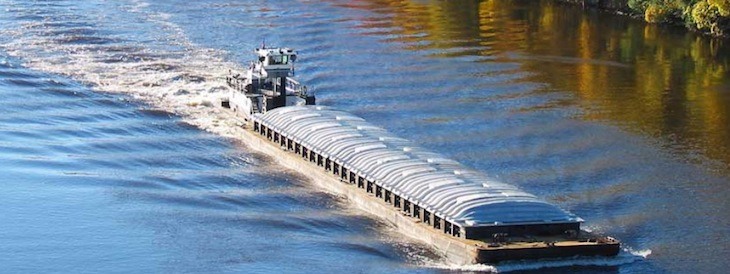
Oklahoma U.S. Sen. Jim Inhofe recently released the list of priority Oklahoma projects he plans to support in Congress and they total millions of dollars for improved waterways and levees.
His list includes nearly $80 million in studies and improvements including expediting design work on the first phase of the Tulsa and West Tulsa Levee System modernization project, expediting work on the first phase of the MKARNS 12 ft. channel deepening project and accelerating critical maintenance work on locks and dams along the MKARNS.
“Infrastructure investments and authorizing funding for our military are the two most important things we do here in Congress,” said the Senator.
Project Name: Tulsa and West Tulsa Levee System
Cost: $13,789,200
Recipient: U.S. Army Corps of Engineers
Location: City of Tulsa and Tulsa County
State: Oklahoma
“As we saw during historic flooding a couple of years ago, Tulsa must have dependable levees for residents’ protection and safety,” Tulsa Mayor G.T. Bynum said.
This project would continue and expedite design work on the first phase of the Tulsa and West Tulsa Levee System (TWTLS) project.
In 2019, Oklahoma suffered a devastating flood event that made clear how important it is to modernize the TWTLS. Floodwaters along the levee system remained high for 11 days, putting incredible strain on the aging levee system. Any catastrophic failure would have resulted in the inundation of the homes and businesses of thousands of Oklahomans.
In April 2020, Corps completed a feasibility study related to the modernization and upgrade of the TWTLS and Congress authorized the project in WRDA 2020. This project will protect large elderly and low-income vulnerable populations and two refineries critical to the Tulsa economy from future flooding disasters.
Project Name: Arkansas River Navigation Study
Cost: $5,000,000
Recipient: U.S. Army Corps of Engineers
Location: 445 miles of the Arkansas River from the Mississippi River to the Tulsa Ports of Catoosa (15 miles east of Tulsa, Oklahoma)
State: Oklahoma and Arkansas
This project would continue and expedite design work on the first phase of the MKARNS 12 ft. channel deepening project.

The MKARNS serves a 12-state region originating at the Port of Catoosa in northeast Oklahoma and running southeast through Oklahoma and Arkansas before meeting the Mississippi River. The Tulsa Ports of Catoosa and Inola are the most westerly inland river ports that are ice-free year round providing a continuous ability for farmers and manufacturers to ship their freight in the most cost effective way.
The MKARNS moves 11 million tons of commerce worth $4 billion annually. The MKARNS is a vital corridor for agriculture commerce (soybeans and wheat) and aggregate commodities (sand, gravel, and rock) from the Gulf Coast to the Mid-West. The MKARNS, on an annual basis, provides for $8.5 billion in sales impacts, $1.6 billion in transportation cost savings, and $289 million in business taxes.
In 2015, the Corps upgraded the classification of the MKARNS from “Connector” to “Corridor” on the National Marine Highway, designated the MKARNS as a high-use waterway system, and labeled the MKARNS as Marine Highway 40.
While approximately 90 percent of the MKARNS is already 12 ft. deep, completing this deepening would increase the capacity of each barge by over 40 percent and resulting in over $250 million in increased business sales annually.
Project Name: Operations and Maintenance of the McClellan-Kerr Arkansas River Navigation System (MKARNS)
Cost: $43,000,000
Recipient: U.S. Army Corps of Engineers
Location: Arkansas River between Broken Arrow and Fort Coffee
State: Oklahoma
Certification: Link here
This project would continue and accelerate critical maintenance work on locks and dams along the MKARNS.
This request would provide $43 million above the FY2022 President’s Budget Request for the MKARNS, Oklahoma project in the Operations and Maintenance (O&M) account, and includes seven work packages for critical backlog maintenance work within the Tulsa District of the U.S. Army Corps of Engineers: Rehabilitate and Paint Tainter Gates at Robert S. Kerr L&D for $9 million; Rehabilitate and Paint Tainter Gates at Webbers Falls L&D for $9 million; Rehabilitate Tainter Valves at Newt Graham L&D for $2.5 million; Rehabilitate and Paint Tainter Gates at Newt Graham L&D for $7 million; Rehabilitate Tainter Valves at WD Mayo L&D for $2.5 million; Rehabilitate and Paint Tainter Gates at WD Mayo L&D for $9 million; and Repair Exposed Structural Rebar on Spillway Bridge at Robert S. Kerr L&D for $4 million.
Project Name: Construction of the Arkansas River Navigation Study
Cost: $10,000,000
Recipient: U.S. Army Corps of Engineers
Location: 445 miles of the Arkansas River from the Mississippi River to the Tulsa Ports of Catoosa (15 miles east of Tulsa, Oklahoma)
State: Oklahoma and Arkansas
This project would complete design work and initiate construction on the first phase of the MKARNS 12 ft. channel deepening project.
W.C. Austin Project – “Lugert-Altus Irrigation District Modernization”
Cost: $5,000,000
Recipient: U.S. Bureau of Reclamation
Location: The W.C. Austin Project (Project) features include Altus Dam; the Main, Altus, West, and Ozark Canals; a 218-mile lateral distribution system; and 26 miles of drains.
State: Oklahoma
This project would allow for district irrigation modernization to address Lugert-Altus Irrigation District water supply shortages, through improving water infrastructure and management, in support of the environment and agricultural industry.
The primary storage unit is Lake Altus, a reservoir formed by a dam across the North Fork of the Red River about 18 miles north of Altus, and by several earth dikes at low places in the reservoir rim. The Main Canal transports water from Lake Altus to the northern boundary of the project’s irrigable land.
The project was authorized by the Rivers and Harbors Act of 1938. The Lugert-Altus Irrigation District, the Oklahoma Department of Tourism, and the Oklahoma Department of Wildlife Conservation manage the project.
As the project manager, the Lugert-Altus Irrigation District delivers water to 48,000 acres of cotton crops. The irrigated cotton producers within the district yield approximately 1250-1800 pounds of cotton per acre, creating a significant economic impact within the region.






